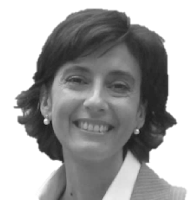In late March, McKinsey published "The next frontier of care delivery in healthcare," an analysis of the trends that will define healthcare delivery in the United States in the coming years, drawn from expert input and led by Shubham Singhal, Mathangi Radha, and Nithya Vinjamoori.
According to McKinsey, there are ten attributes of future health care, defined below and displayed in the accompanying infographic:
- Patient-centred: this attribute brings together various aspects such as a holistic and personalized vision, accessibility to health services and data, the use of wellness services and user satisfaction.
- Virtual: the pandemic has triggered the use of remote health and has predisposed providers and patients to new models of care that combine virtual care with face-to-face care in services such as urgent care, scheduled consultation, home care or medication administration at home.
- Ambulatory: care provided in health centres represents a third of the activity invoiced in the United States. Outpatient care is associated with shorter waiting and visit times and lower complication rates.
- Home care: care provided at home expands to new models such as home dialysis or home hospitalization. The combination of the above attributes allows the redefinition of care processes.
- Based on value and risk-taking: the expectation of growth in value-based contracts in the coming years is associated with the prevention orientation of services and the role of primary care.
- Driven by data and technology: digital health and the use of data for decision-making and personalization of care can change the trend of healthcare costs, improve productivity and facilitate the deployment of value-based healthcare.
- Transparent and interoperable: new regulations force the publication of rates, restrict the blocking of data between providers and facilitate access to health data.
- Facilitated by new medical technologies: self-service opportunities for the management of chronic pathologies, remote monitoring, home telemetry or robotics are examples of technologies applied to the transformation of care models that include outpatient, home and virtual care.
- Financed by private investors: Private investment in healthcare is growing significantly and is geared towards new models of care that take advantage of the trends described above to overhaul the patient experience.
- Integrated despite being fragmented: the integration of care is based on the coordination of ecosystem agents through technological platforms.
Despite being predictions based on and directed to the United States healthcare sector, most of the attributes described are directly applicable to our European context with certain nuances. It‘s worth retaining as positive the consolidation of new models of care around the needs of the person, the value of care and the possibilities of de-concentration provided by technologies and data. The centrifugal trend toward more ambulatory, home and virtual care draws a substantial paradigm shift in the provision of services with deep consequences on how these services should be purchased, managed and provided. This new constellation leads to prevention and care but requires fundamental changes in the messages that are transferred to health providers.
In the "difficult to transfer" chapter, the increase in private investment in the health sector arouses opposing sentiments. On the one hand, the social centrality of health caused by the pandemic and shaken by technological innovation offers the opportunity to join forces to improve, from within and from outside, systems with a tendency to immobility. On the other hand, the expectation of suggestive returns on investment – explains the investors' interest and can aggravate existing inequalities.
Everything indicates that guiding the future of health care through these consolidated trends will be a challenge full of balances and compromises between the necessary change and the undesirable consequences that will require decision-makers to have a sophisticated compass.










